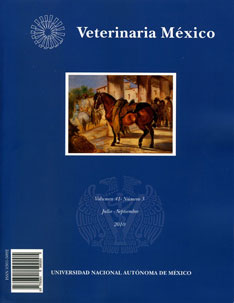Oedogonium capillare (Linnaeus) (Kuetzing, 1845) as a strategy to purify live Tubifex tubifex (Müller, 1974) food for fish
Main Article Content
Abstract
The sludge worm Tubifex sp is a good live food for aquatic species due to its high nutrimental content, short reproduction period, its broad range of habitats, and its fertility and reproductive capability in wide temperature range (0.5ºC-30ºC). It becomes a direct vector of bacteria such as Salmonella, Shiguella and E. coli, also, in an obliged Myxobollus cerebralis host. Nevertheless, in controlled culture conditions "clean" population can be obtained. Oedogonium capillare alga possesses bactericide capacity against different bacterial genera. The present study has the objective to prove that O. capillare alga constitutes a good source to reduce the bacterial charge of the Tubifex worm. A 100 g of Tubifex were left free in five aquariums, all in similar conditions of: water temperature, aeration and water volume, four of these were experimental, one with O. capillare alga placed freely in the aquarium, and the other one contained within a mesh so it would not have contact with the worm; in two more aquariums, 2 g of two antibiotics for aquaculture use were mixed,one with kanamicin added, another with ampicillin, and a third with only water as control. Every seven days and during five weeks, a qualitative and quantitative analysis of the bacterial charge of each worm groups was carried out, this was identified according to the Merck Manual and the API-20E. A unilateral variance analysis was applied. It was proven that O. capillare significantly decreases the sludge worm’s bacterial charge, by reducing the number of species from 15 to 4 and from 2 x 109 to 3 x 105 cfu/mL, in two weeks of treatment.
Article Details
License

Veterinaria México OA by Facultad de Medicina Veterinaria y Zootecnia - Universidad Nacional Autónoma de México is licensed under a Creative Commons Attribution 4.0 International Licence.
Based on a work at http://www.revistas.unam.mx
- All articles in Veterinaria México OA re published under the Creative Commons Attribution 4.0 Unported (CC-BY 4.0). With this license, authors retain copyright but allow any user to share, copy, distribute, transmit, adapt and make commercial use of the work, without needing to provide additional permission as long as appropriate attribution is made to the original author or source.
- By using this license, all Veterinaria México OAarticles meet or exceed all funder and institutional requirements for being considered Open Access.
- Authors cannot use copyrighted material within their article unless that material has also been made available under a similarly liberal license.



